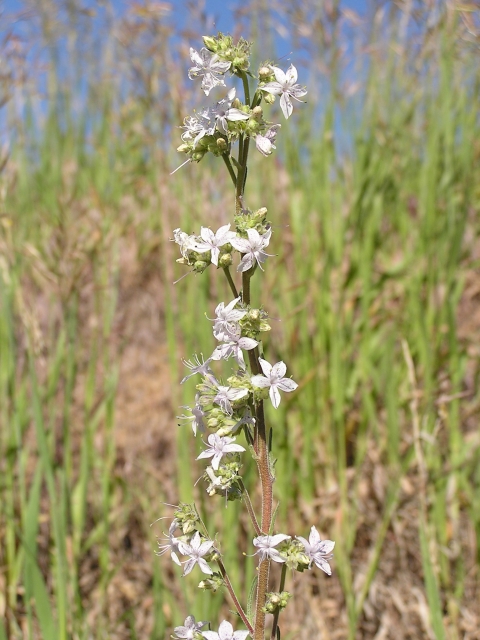Photo By/Credit
Mayo, Ellen/USFWS
Media Usage Rights/License
Public Domain
Image
Ipomopsis polyantha is an herbaceous biennial 12 to 24 inches (in) (30 to 60 centimeters (cm)) tall, branched from near the base above the basal rosette of leaves. Deeply divided leaves with linear segments are scattered up the stem. Stems and flower clusters are covered with glandular hairs. Flower clusters are along the stem in the axils of the leaves as well as at the top of the stem. The white flowers are 0.4 in (1 cm) long, with short corolla tubes 0.18 to 0.26 in (0.45 to 0.65 cm) long, and flaring corolla lobes flecked with purple dots (Anderson 1988, p. 3). These dots are often so dense that they give the flower a pinkish or purplish hue. The stamens extend noticeably beyond the flower tube, and the pollen is blue (Grant 1956, p. 353), changing to yellow as it matures (Collins 1995, p. 34). Seeds form a mucilaginous (secreting sticky mucous) coat after they are wet. Seeds germinate much faster in Mancos Shale soil than in potting soil (Collins 1995, p. 72). Mature seeds germinate to form rosettes that produce flowering stalks during the next growing season, or they may persist as rosettes for a year or more until conditions are right for flowering. Plants produce abundant fruits and seeds, but have no known mechanism for long-distance dispersal (Collins 1995, pp. 111–112). After seeds are mature, the plants dry up and die. We do not know how long the seeds remain viable.
Species
